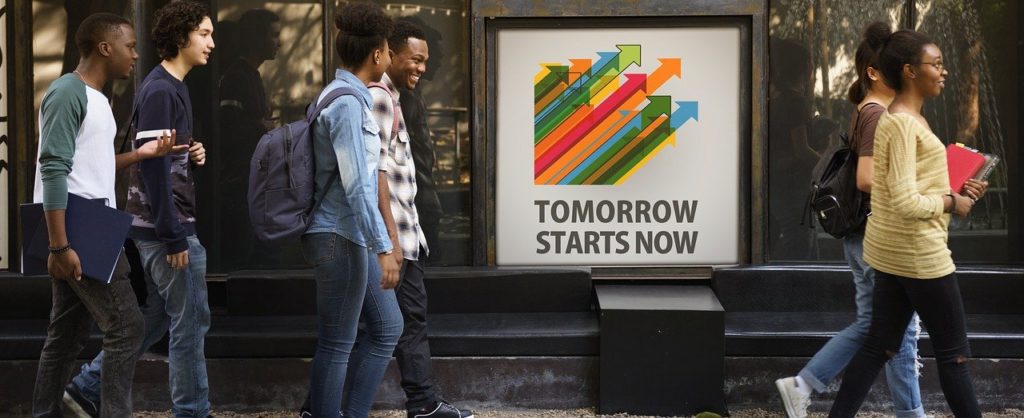The United States is one of the world’s most ethnically and racially diverse countries. Although approximately 60 percent of the US population identifies as white today, analysts predict that, by 2055, the United States will not be dominated by a single ethnic or racial majority.
As America becomes more diverse, inclusivity is a growing priority. Organizations and businesses, both private and public, are rapidly coming to recognize the importance of diversity. Nowhere is diversity more important than in education.
Education levels the playing field for all young people irrespective of race, ethnicity, and socio-economic background, ensuring that all young Americans have access to the same opportunities. Diversity in postsecondary education is particularly impactful. However, disparities still exist. Here’s what you need to know:
Why Is Inclusivity in Education Important?
In a recent interview, Dr. Naeemah Clark, Professor of Communications at Elon University, outlined the benefits of diversity within US colleges in the context of increasing diversity throughout American society. Dr. Clark explained that bringing together students from different races, ethnicities, faiths, economic classes, and geographic backgrounds enables society to find realistic solutions to real-world problems.
Many researchers and educators believe that ethnic and racial diversity within the school system helps students foster understanding and acceptance of different cultures and belief systems, dispelling stereotypes and instilling empathy. Research carried out in the mid-20th century underlines the importance of racial diversity within schools in terms of improving reading levels and increasing the likelihood of graduation for students from racial minorities.
By making schools more racially and ethnically diverse, educators reported a positive impact on higher educational attainment; improved work aspirations; and greater integration between racial groups that carried over into interracial friendships throughout adult life. Researchers also found that students with an inclusive educational experience demonstrated an increased desire to work and live in racially diverse areas.

Many US Institutions Lack Diversity
The 1954 Supreme Court case Brown v Board of Education effectively made racial segregation within the school system illegal. The Court ruled that such actions stunt development of minority children, limiting their opportunities. At the time of the ruling, many schools throughout America had already commenced the process of desegregation. Despite initial resistance by Southern states, all US schools became fully integrated by the 1970s.
Nevertheless, according to statistics published by the US Department of Education, there remain significant disparities in terms of race and ethnicity at many American higher education institutions. Take for example North Dakota State University, a large public school situated in Fargo. Approximately 90 percent of its student body is white, making North Dakota one of the least diverse universities in the country.
Howard University in Washington, DC, is a predominantly black university, with African Americans representing over 94 percent of its student body. Founded in 1867, Howard University is a historically black learning institution, attended by many prominent black professionals specializing in multiple fields, including the first black American to serve at the United States Supreme Court.
The Racial Achievement Gap
There have been substantial efforts from many of America’s most prominent educational institutions to increase diversity and inclusivity among students. However, substantial disparities remain in terms of educational attainment between different ethnic groups.
Latinos and African Americans are still statistically disadvantaged. As a result, they are less likely to score highly on standardized tests, and more likely to drop out of high school than whites. Latinos and African Americans are also less likely to enter and complete college. In contrast, white students score lower when compared with Asian American students.
The source of such disparities is a subject of debate among scholars. Some attribute the racial achievement gap to home life, while others point to a lack of access to certain resources for minority ethnic groups.
Whatever the cause, experts warn that the achievement gap is not only bad for minorities, but bad for the country as a whole. It jeopardizes political participation and representation as well as destabilizing the future of the national economy by limiting the quality and competitiveness of the American workforce.
Underachieving students are more likely to drop out of high school and failed to acquire sufficient skills before entering the workforce. This limits their professional potential and earning capabilities. Improving achievement of minority students and eliminating the racial achievement gap is therefore critical in eradicating economic disparities between ethnic groups, making America’s future workforce more productive, and facilitating interracial cohesion and integration throughout American society.
How Can US Universities Become More Inclusive?
According to a conference of university leaders staged by Pacific Rim in June 2019, in order to achieve increased diversity, university leaders must obliterate barriers, ensuring students of all backgrounds are included.
However, as Jerry Kang, the University of California’s vice-chancellor for equity, diversity, and inclusion explained, the value of inclusion goes far beyond being “kind and nice and warm,” despite all of those things being important. He underlined the importance of social belonging and inclusion in terms of providing the support necessary for individuals of all backgrounds to perform to their highest capacities.
The simple truth is, racial diversity helps all races, making us all better thinkers, scholars, citizens, workers, and innovators.

 Joanna (Jo) Riley is an entrepreneur, investor, and advocate in technology, and is currently the CEO and Co-Founder of Censia. Jo has a highly experienced background in building and scaling companies, which she attributes to her deep passion for people and building technologies that allow people to be their best selves. She brings her wide knowledge of the industry to better transform the way enterprise companies hire talent. You can connect with Joanna Riley at @joannakiddriley on
Joanna (Jo) Riley is an entrepreneur, investor, and advocate in technology, and is currently the CEO and Co-Founder of Censia. Jo has a highly experienced background in building and scaling companies, which she attributes to her deep passion for people and building technologies that allow people to be their best selves. She brings her wide knowledge of the industry to better transform the way enterprise companies hire talent. You can connect with Joanna Riley at @joannakiddriley on